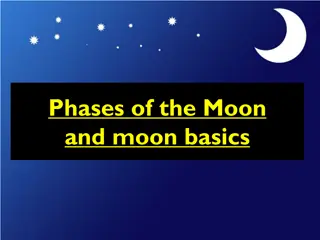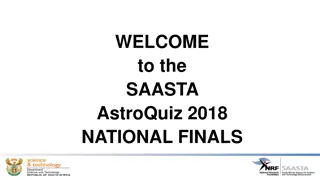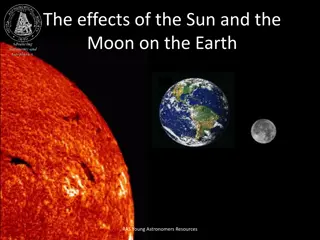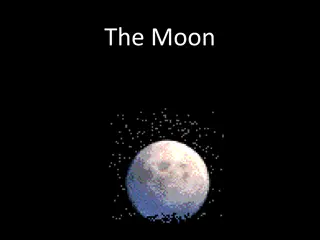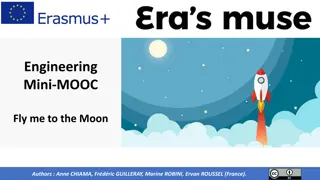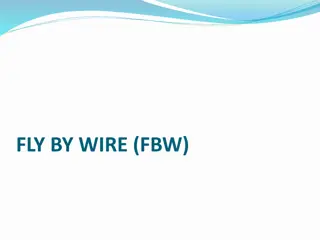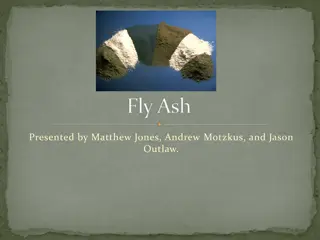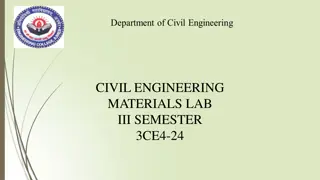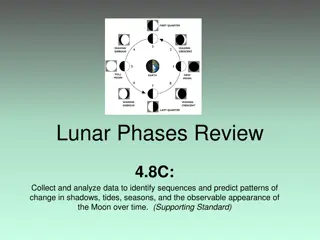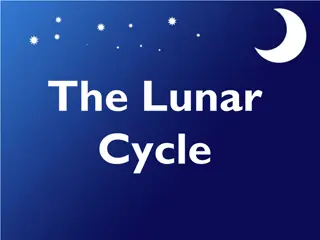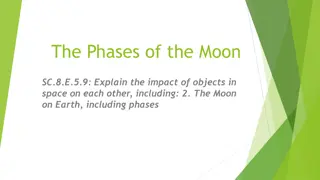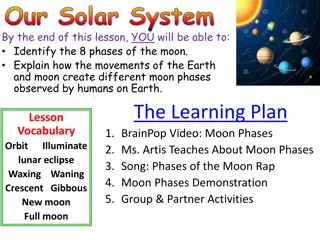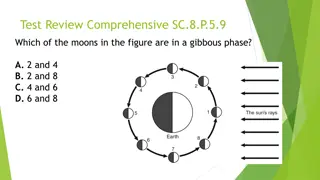Engineering Mini-MOOC: Fly me to the Moon Project
Dive into the Erasmus+ Programme Partnership Project featuring an engaging activity titled "Accident on the Moon." Participants must rank essential equipment for reaching the mother rocket in a group exercise. Learn how to calculate individual and collective scores to compare with NASA rankings. A unique hands-on experience in space engineering and teamwork awaits!
Download Presentation

Please find below an Image/Link to download the presentation.
The content on the website is provided AS IS for your information and personal use only. It may not be sold, licensed, or shared on other websites without obtaining consent from the author.If you encounter any issues during the download, it is possible that the publisher has removed the file from their server.
You are allowed to download the files provided on this website for personal or commercial use, subject to the condition that they are used lawfully. All files are the property of their respective owners.
The content on the website is provided AS IS for your information and personal use only. It may not be sold, licensed, or shared on other websites without obtaining consent from the author.
E N D
Presentation Transcript
Engineering Mini-MOOC Fly me to the Moon Authors : Anne CHIAMA, Fr d ric GUILLERAY, Marine ROBINI, Ervan ROUSSEL (France).
Erasmus+ Programme Partnership Project n 2019- 1-SE01-KA201-060604
Erasmus+ Programme Partnership Project n 2019- 1-SE01-KA201-060604 1. Accident on the Moon (engage) Instructions for the task Imagine an accident on the moon : the aim is to find the essential equipment to reach the mother rocket, by classifying 15 objects in order of importance. The exercise is done individually and then in groups.
Erasmus+ Programme Partnership Project n 2019- 1-SE01-KA201-060604 1. Accident on the Moon (engage) 10 minutes : individual ranking Each participant fills the decision sheet (first column). During this phase, no exchange between the participants is allowed. 30 minutes : collective ranking (working group) In your group determine a collective ranking of the same elements. Then fill the third column Collective ranking . 20 minutes : explanation and score results Fill the last column with the NASA ranking and calculate the individual and collective score. Calculation : the score is the difference between your rank and NASA rank. Calculate each line and then the total. The the lower the score, the better the result.
Erasmus+ Programme Partnership Project n 2019- 1-SE01-KA201-060604 1. Accident on the Moon (engage) How to calculate your score ? 1. Complete the Rankink of N.A.S.A. column.
Erasmus+ Programme Partnership Project n 2019- 1-SE01-KA201-060604 1. Accident on the Moon (engage) How to calculate your score ? 1. Complete the Rankink of N.A.S.A. column. 2. Then, calculate the distance between Individual ranking and N.A.S.A. ranking. Make the individual total.
Erasmus+ Programme Partnership Project n 2019- 1-SE01-KA201-060604 1. Accident on the Moon (engage) How to calculate your score ? 1. Complete the Rankink of N.A.S.A. column. 2. Then, calculate the distance between Individual ranking and N.A.S.A. ranking. Make the individual total. 3. Finaly, calcule the distance between Collective ranking and N.A.S.A. ranking. Make the collective total.
Erasmus+ Programme Partnership Project n 2019- 1-SE01-KA201-060604 1. Accident on the Moon (engage) How to read your score ? The lawer your score is, the better you are. In the below example, the individual score is 23 and the collective score is 17. The group has been better than the individual.
ranking of N.A.S.A. Erasmus+ Programme Partnership Project n 2019- 1-SE01-KA201-060604 Objects Explanation 2 tanks of 50 kg of oxygen each First essential element of survival 1 1. Accident on the Moon (engage) moon Indispensable to compensate a strong dehydration due to the very great heat on the illuminated side of the 25 liters of water 2 A celestial map of the lunar constellations Essential for orientation 3 Concentratedfood Efficient way to repair energy loss 4 A (medium frequency) solar powered transceiver Useful to try to communicate with the mother rocket but this device does not have much range 5 50 metersof nylon rope Useful for roping up, climbing rocks; possibly for hoisting the injured 6 A medical kit and hypodermic syringes The injections of vitamins, serum etc...require a special opening (provided by the N.A.S.A.) 7 A silk parachute Can be used to protect from sunlight 8 A self-inflating lifeboat Can be used as a sled to pull objects; the gas (CO ) used for this device can be used for propulsion 9 Light signals Useful when the mother rocket is in sight 10 2 x 45 caliber pistols Can be used to accelerate propulsion; in a pinch to end one's life 11 A case of powderedmilk Nutritional trap: more cumbersome than concentrated food 12 A solar poweredheater Not useful: suits are heated 13 A magnetic compass No use on the moon; the magnetic field is not valued there 14 A matchbox The absence of oxygen does not allow them to ignite 15
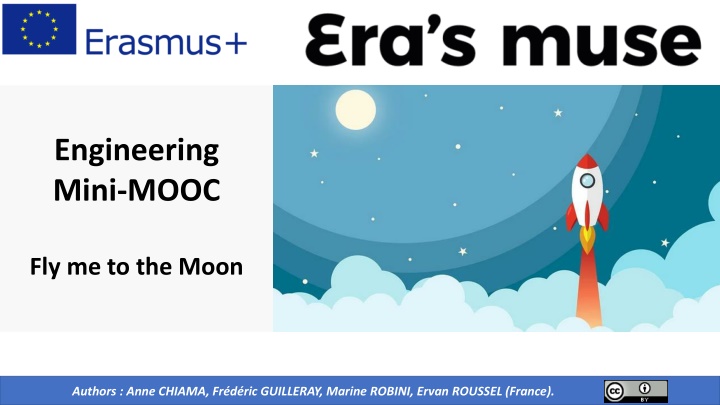

![get⚡[PDF]❤ Building Habitats on the Moon: Engineering Approaches to Lunar Settle](/thumb/21624/get-pdf-building-habitats-on-the-moon-engineering-approaches-to-lunar-settle.jpg)

